Nendo and Fritz Hansen design fully recycled plastic chair
Take an exclusive look at N02 Recycle, a moulded, stackable chair system made from upcycled household plastic, Polypropylene
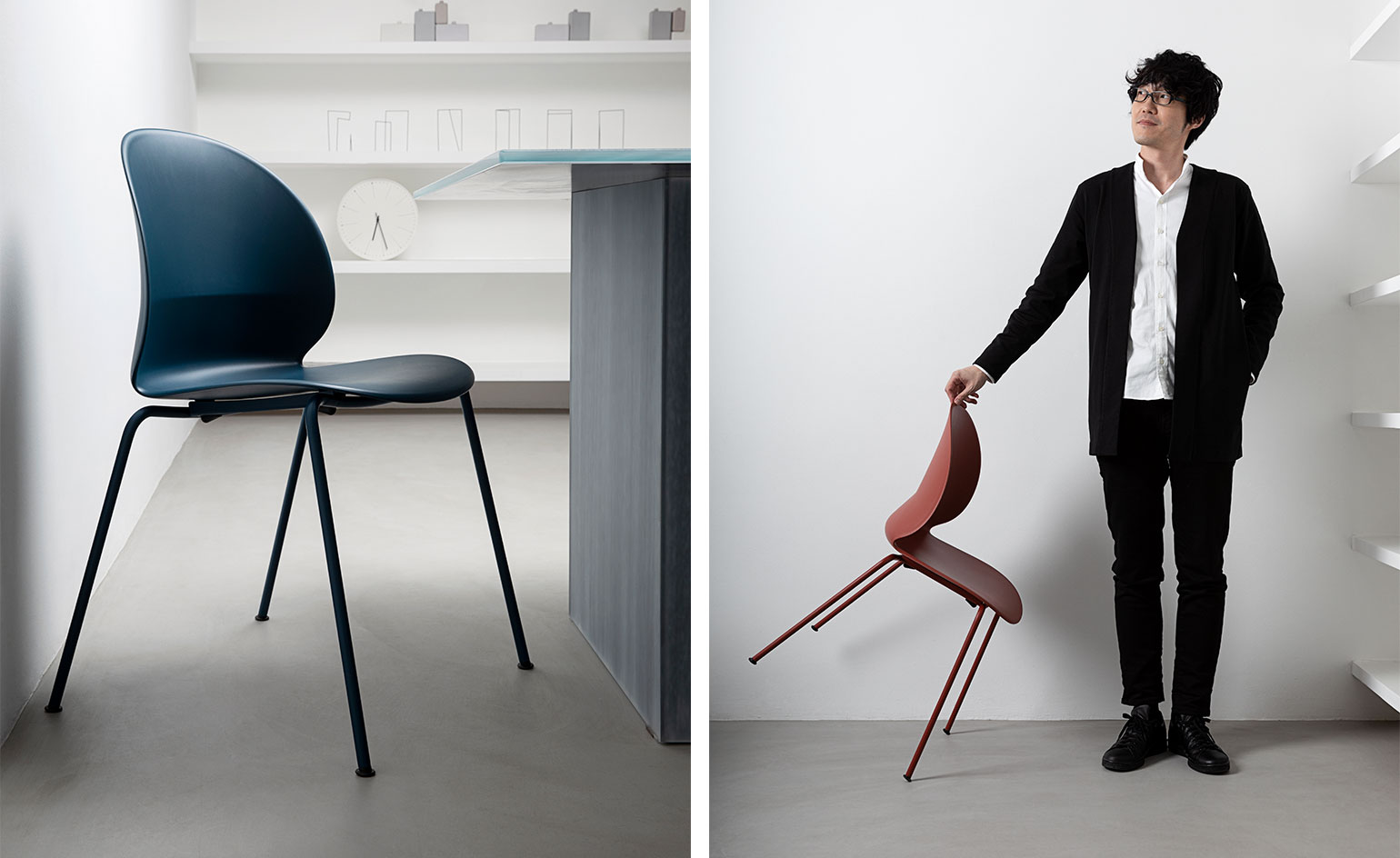
‘20 years ago, a designer would only think about the head of the product: How do we produce it? How can we sell it, how will people use it?’ declares Nendo founder, designer Oki Sato, swivelling slightly on the wheels of his latest creation for Danish furniture brand Fritz Hansen. ‘I think more and more designers now look at the tail of the product, how will it be thrown away and what's going to happen after that.’
Sat in his Milan showroom on a grey Sunday in September, the Scandinavian-inspired colour palette of the scattered flock of chairs is the only source of pigment in the otherwise stark white shopfront space. The chair in question is N02 Recycle, both Sato and the brand’s first foray into recycled materials: a moulded, stackable system made from recycled household plastic, Polypropylene, sourced nearby in central Europe.
Polypropylene is the kind of plastic we all know intimately. Food packaging, water bottle lids, straws: any type of household plastic waste labelled with the recycle code ‘5’. To transform your discarded tomato packaging into Sato and Fritz Hansen’s new chair, the recycled materials are ground up into pellets and melted into their new roles, a process that can be repeated, in theory, ad infinitum. Uniting, as Sato describes, the product’s head and tail.
Working with Polypropylene, though, presented a number of challenges: the recycled material by nature is slightly more rigid than the plastic typically used for a stacking chair, so allowing for flexibility and comfort was key. ‘Controlling the thicknesses within the shell was the biggest challenge,’ explains Sato of the chair’s design, which tapers from a relatively deep base outwards like a curved flower petal, preserving movement and bounce while ensuring structural integrity.
'Controlling the thicknesses within the shell was the biggest challenge'
Inspiration for the form came from ‘a sheet of paper folded in the middle,’ he says. ‘We noticed that it creates a nice form that also has lumbar support. It does not touch your body too much and it does not constrain your movements too much, either. When you're sitting down people do not necessarily sit like this,’ Sato freezes, back-rigid with his feet flat on the floor, ‘they would go like this,’ he explains, relaxing into a slouch, elbow draped over the backrest, ‘it had to adapt to all these different ways of sitting.’
The N02 Recycle is being launched in three different formats: four-legged, sledge and swivel bases. The sustainable mindset also extends beyond plastic: the chromed steel sledge base is 50 per cent recycled, while the polished aluminium swivel stands at 95 per cent.
‘I think, in general, we need to have a better understanding of materials,’ explains Sato when asked whether the material research that went into this project will have a spill-over into his practice at large. ‘The way we select materials, the way we treat materials. This know-how will be adapted to our future projects.’
INFORMATION
Wallpaper* Newsletter
Receive our daily digest of inspiration, escapism and design stories from around the world direct to your inbox.
Laura May Todd, Wallpaper's Milan Editor, based in the city, is a Canadian-born journalist covering design, architecture and style. She regularly contributes to a range of international publications, including T: The New York Times Style Magazine, Architectural Digest, Elle Decor, Azure and Sight Unseen, and is about to publish a book on Italian interiors.
-
 Sotheby’s is auctioning a rare Frank Lloyd Wright lamp – and it could fetch $5 million
Sotheby’s is auctioning a rare Frank Lloyd Wright lamp – and it could fetch $5 millionThe architect's ‘Double-Pedestal’ lamp, which was designed for the Dana House in 1903, is hitting the auction block 13 May at Sotheby's.
By Anna Solomon
-
 Naoto Fukasawa sparks children’s imaginations with play sculptures
Naoto Fukasawa sparks children’s imaginations with play sculpturesThe Japanese designer creates an intuitive series of bold play sculptures, designed to spark children’s desire to play without thinking
By Danielle Demetriou
-
 Japan in Milan! See the highlights of Japanese design at Milan Design Week 2025
Japan in Milan! See the highlights of Japanese design at Milan Design Week 2025At Milan Design Week 2025 Japanese craftsmanship was a front runner with an array of projects in the spotlight. Here are some of our highlights
By Danielle Demetriou
-
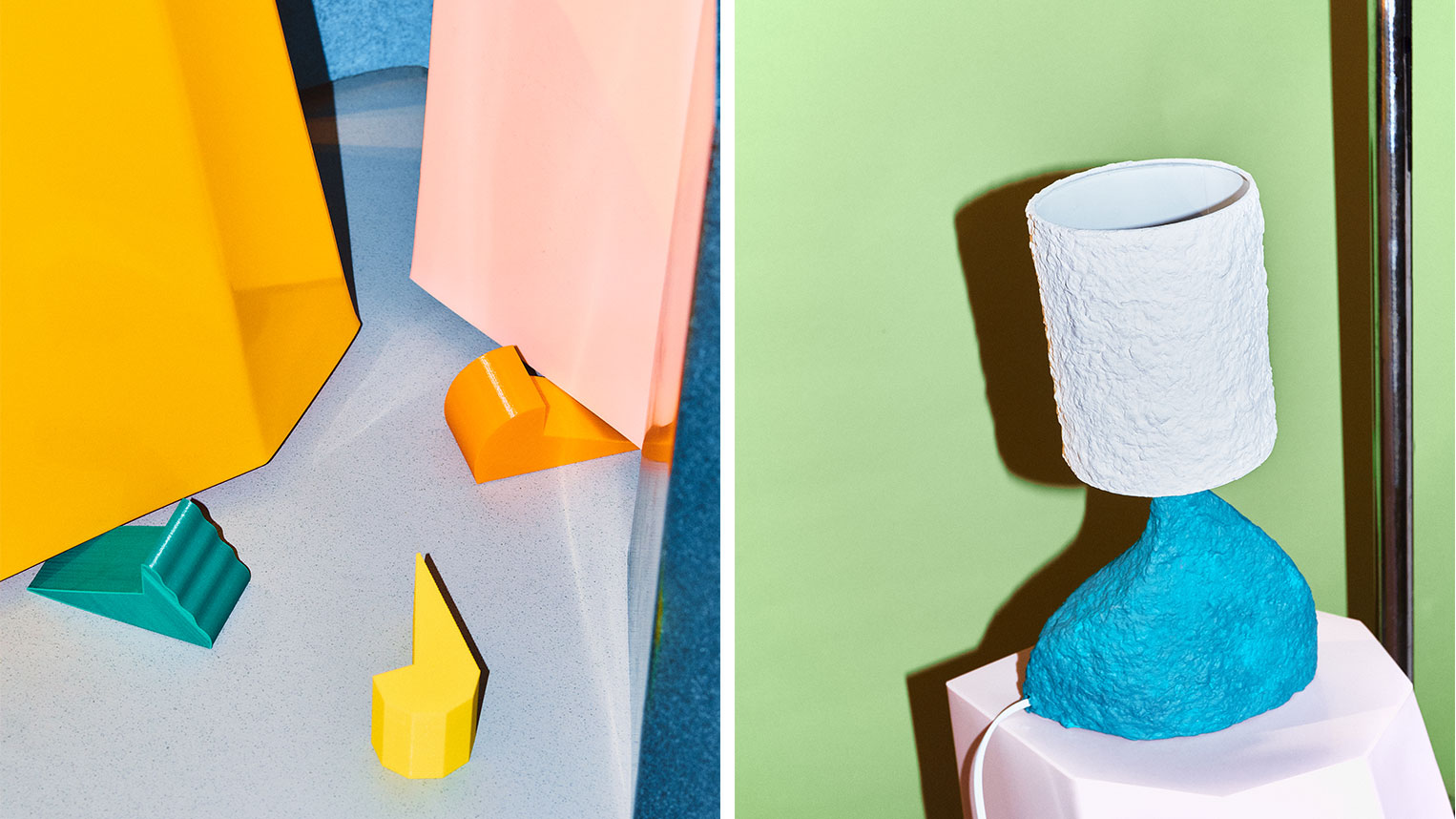 Hyperlocal design: these Atelier100 products are made within 100km of London
Hyperlocal design: these Atelier100 products are made within 100km of LondonAtelier100 launches its retail space and debut locally focused design collection in London’s Hammersmith
By Martha Elliott
-
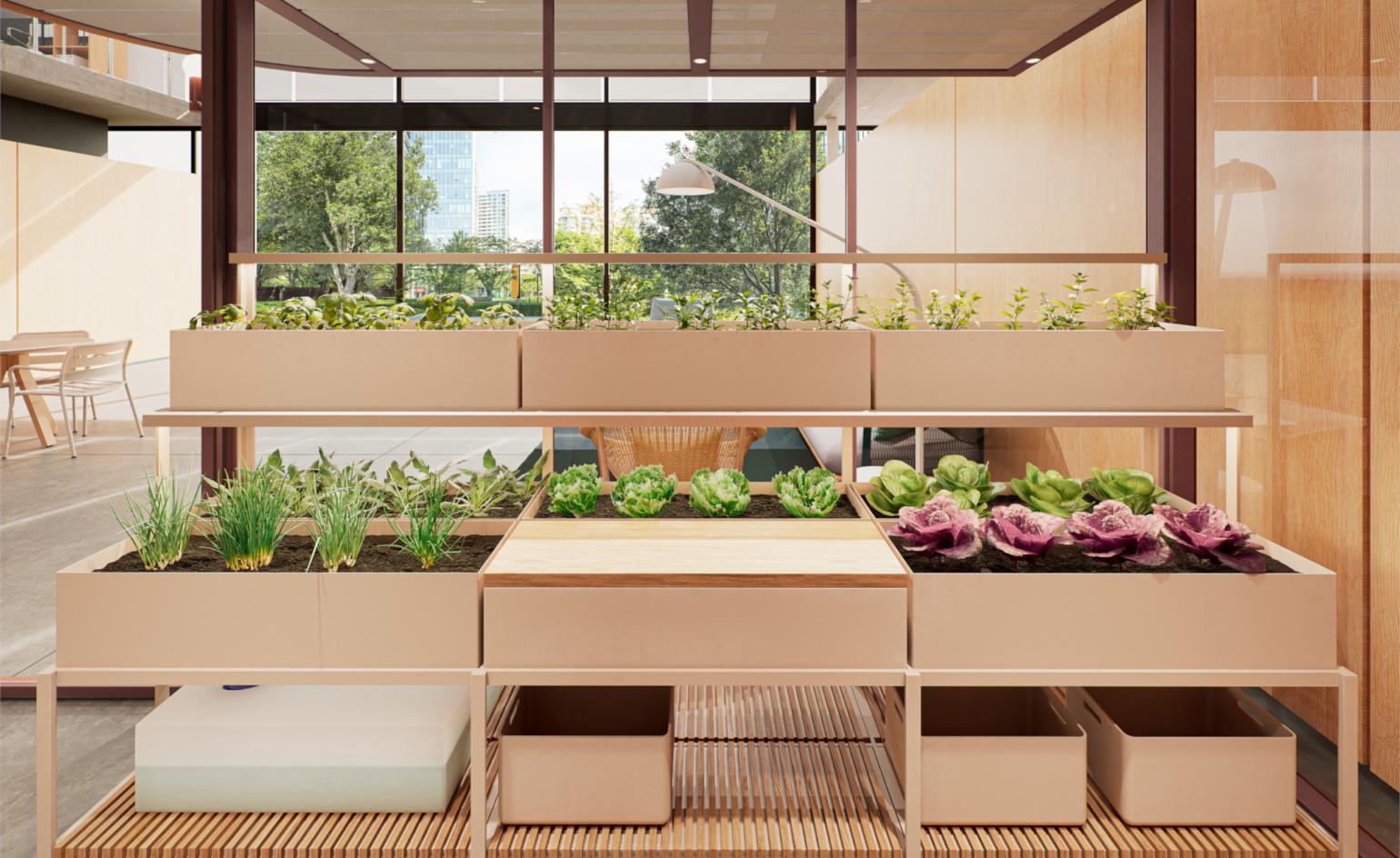 Kettal and Tectum’s indoor hydroponic garden combats cabin fever with office-grown veg
Kettal and Tectum’s indoor hydroponic garden combats cabin fever with office-grown vegKettal and Tectum Garden’s hydroponic indoor garden offers new opportunities for home-grown veg and adds a sprinkle of greenery to office spaces
By Martha Elliott
-
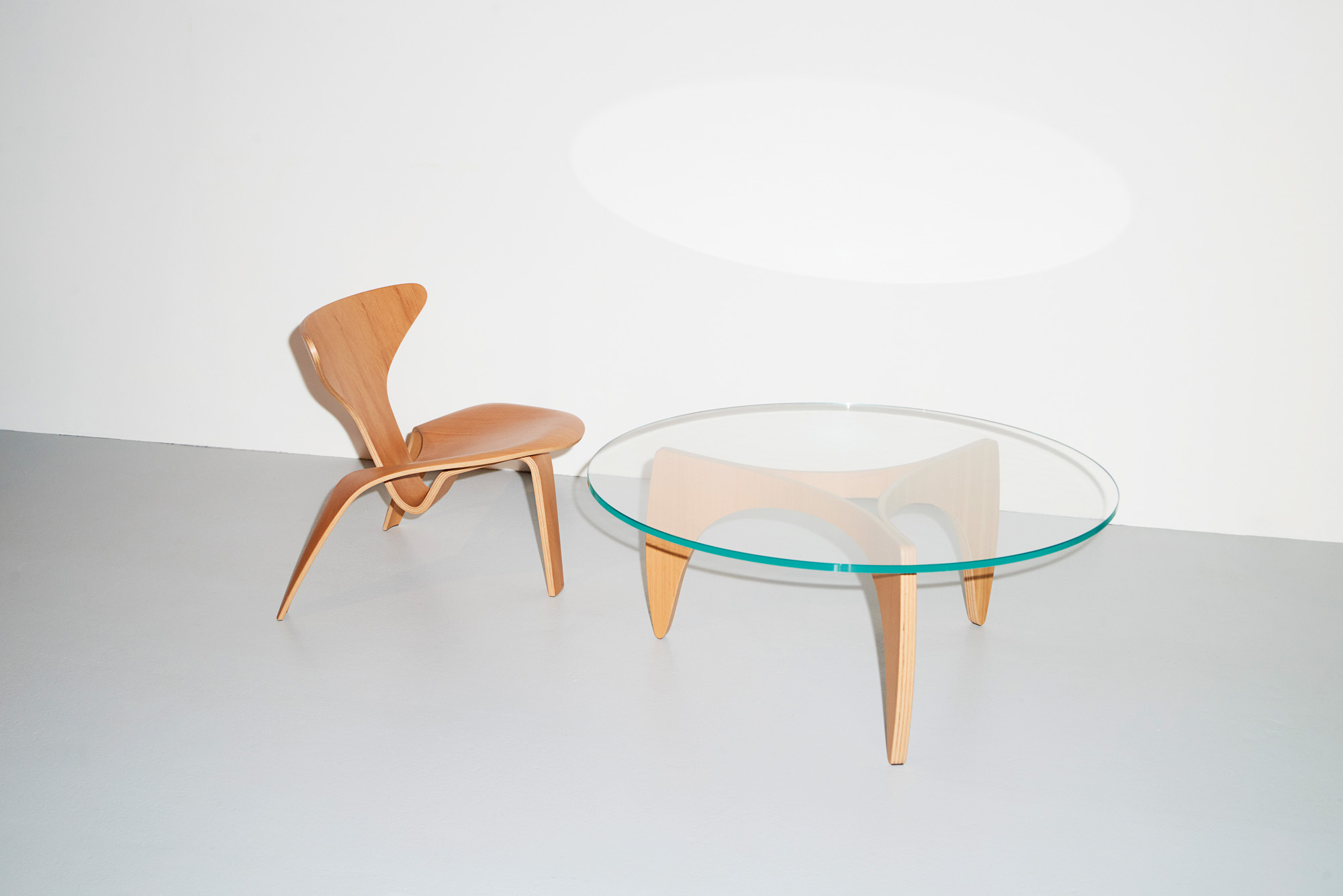 Fritz Hansen’s new collections celebrate the past while looking to the future
Fritz Hansen’s new collections celebrate the past while looking to the futureAhead of its 150th anniversary, Fritz Hansen launches a new light by Kasper Kjeldgaard and a tempting assortment of updated classics
By TF Chan
-
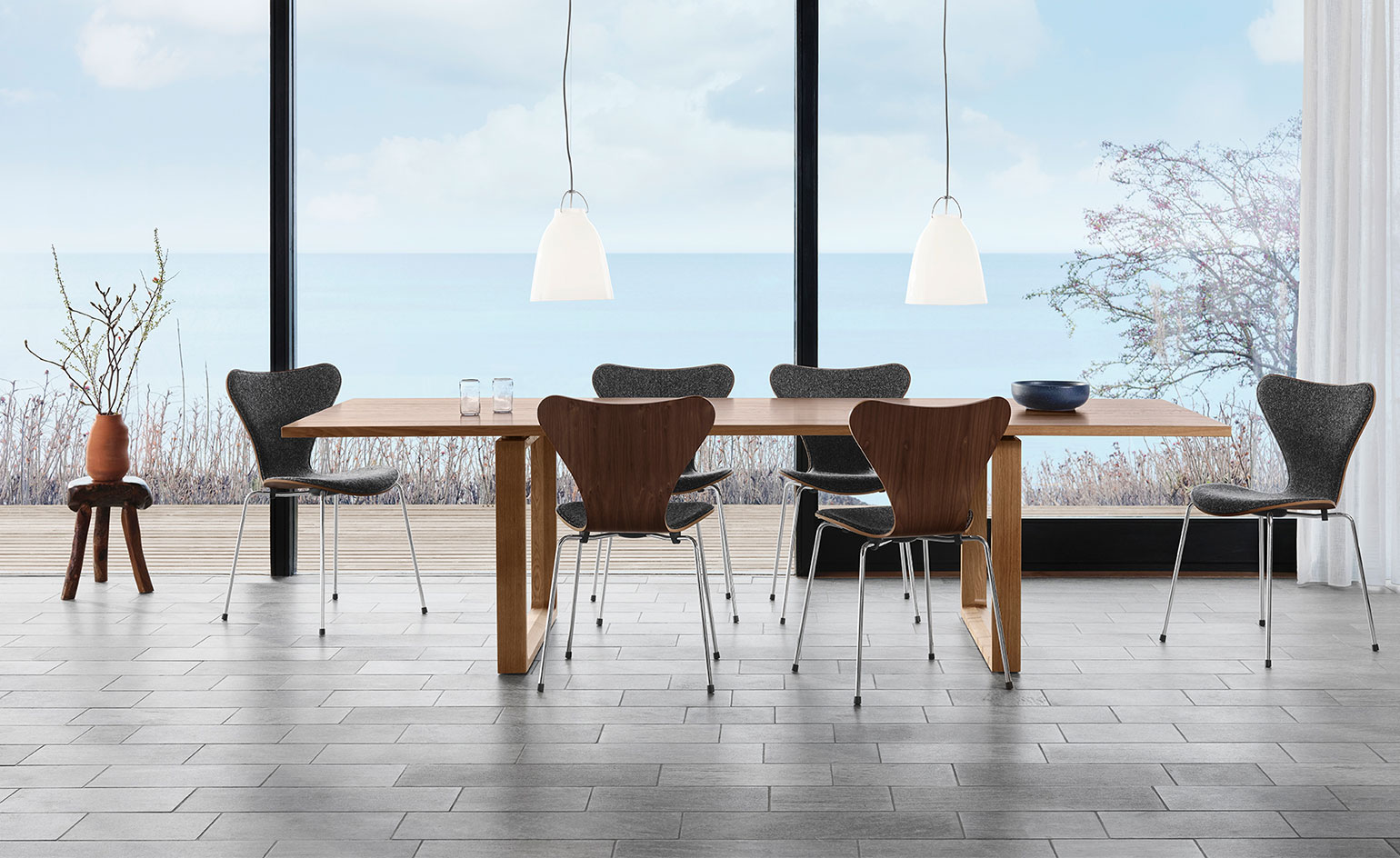 Fritz Hansen marks its 150th anniversary with new collection
Fritz Hansen marks its 150th anniversary with new collectionFritz Hansen’s ‘Anniversary Collection’ features reissues of iconic pieces by Arne Jacobsen and Poul Kjærholm, presented during 3 Days of Design 2022 (15 – 17 June)
By Rosa Bertoli
-
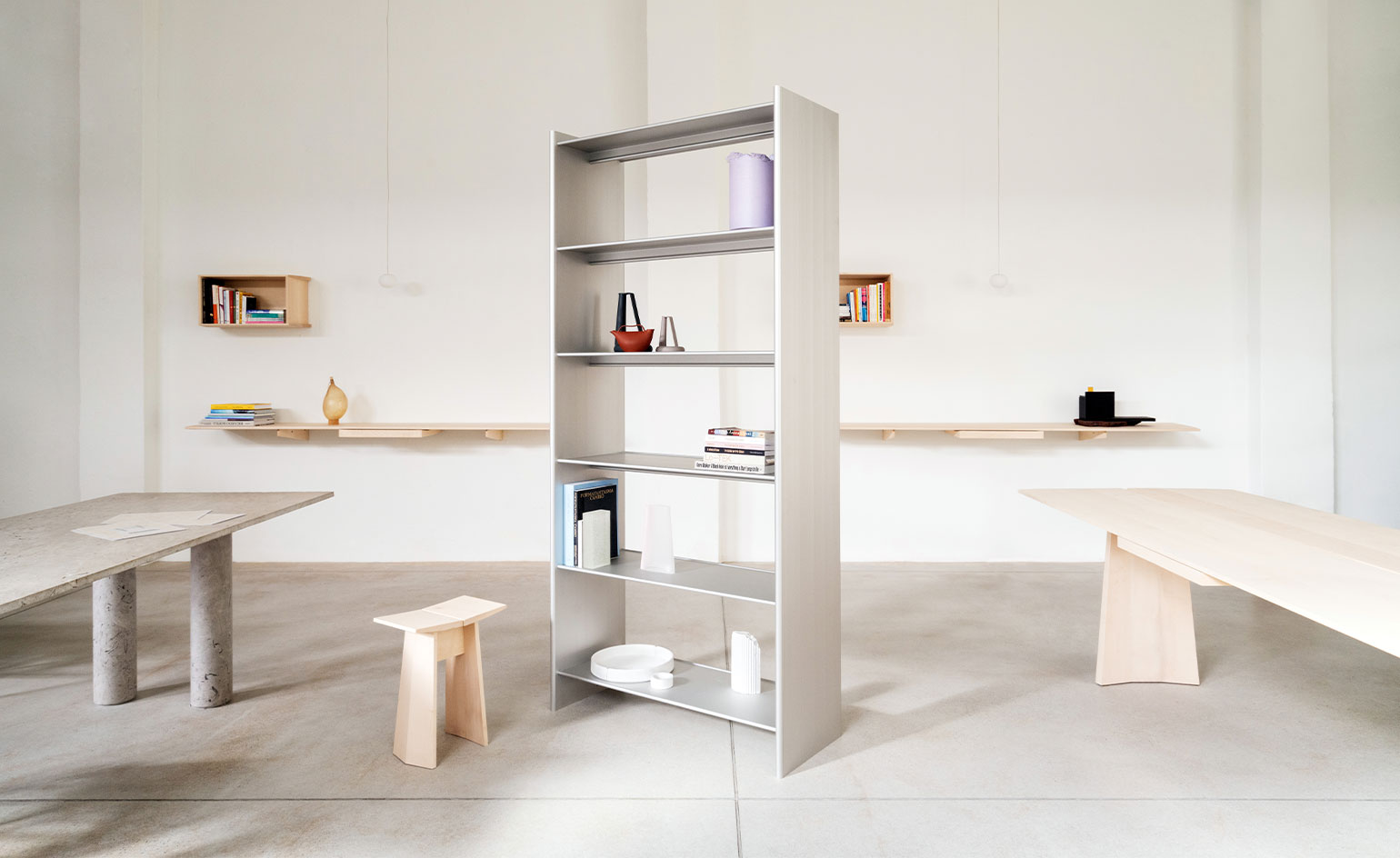 Formafantasma’s minimalist, responsible shelving system for Hem
Formafantasma’s minimalist, responsible shelving system for HemFormafantasma and Hem unveil the ‘T Shelf’, a design in extruded aluminium created in collaboration with specialist Hydro
By Anne Soward
-
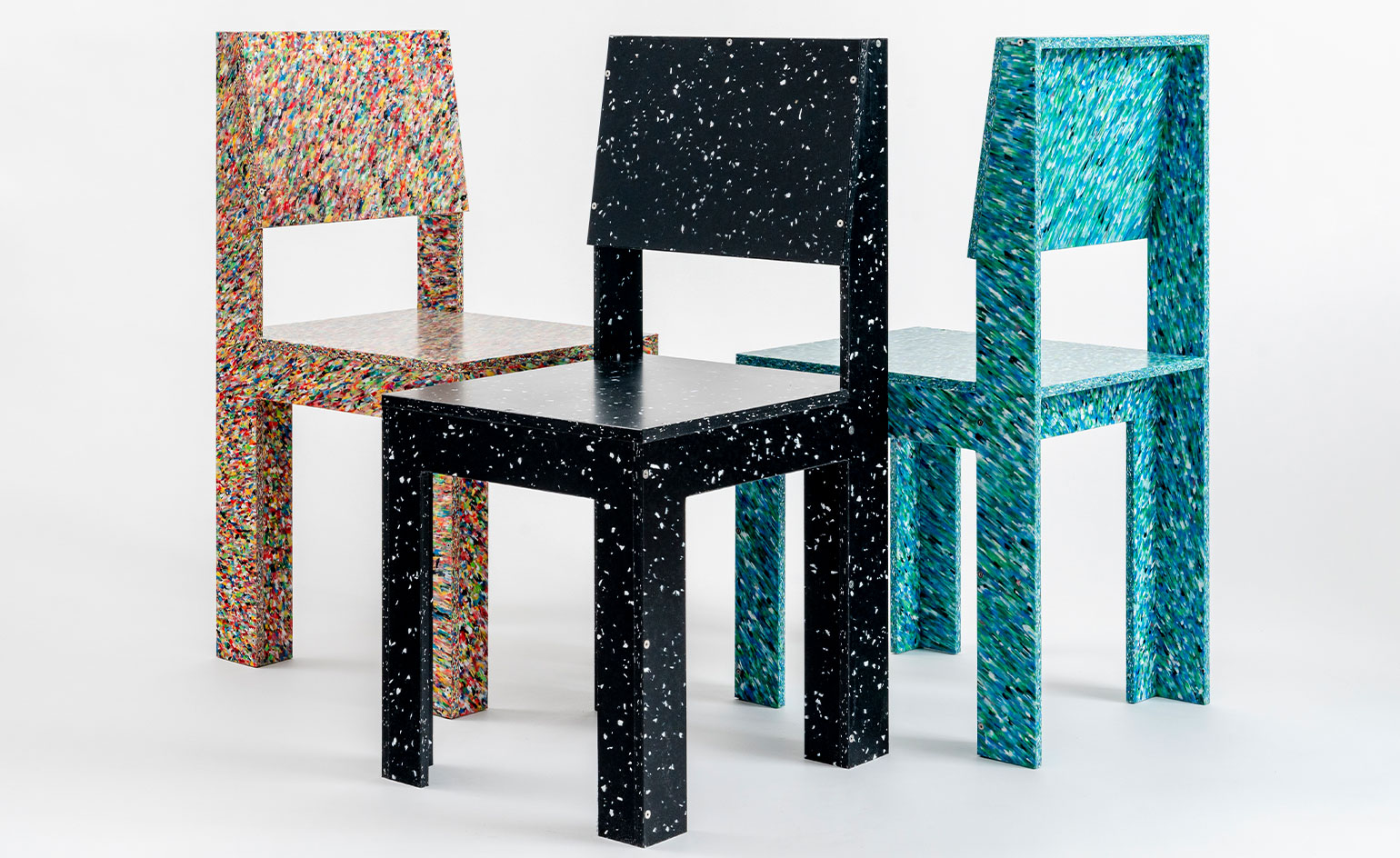 Post consumer waste design: Jane Atfield’s groundbreaking recycled chair turns 30
Post consumer waste design: Jane Atfield’s groundbreaking recycled chair turns 30New York gallerist Emma Scully revisits the groundbreaking design of Jane Atfield's RCP2 recycled plastic chair, on the 30th anniversary of its creation
By Pei-Ru Keh
-
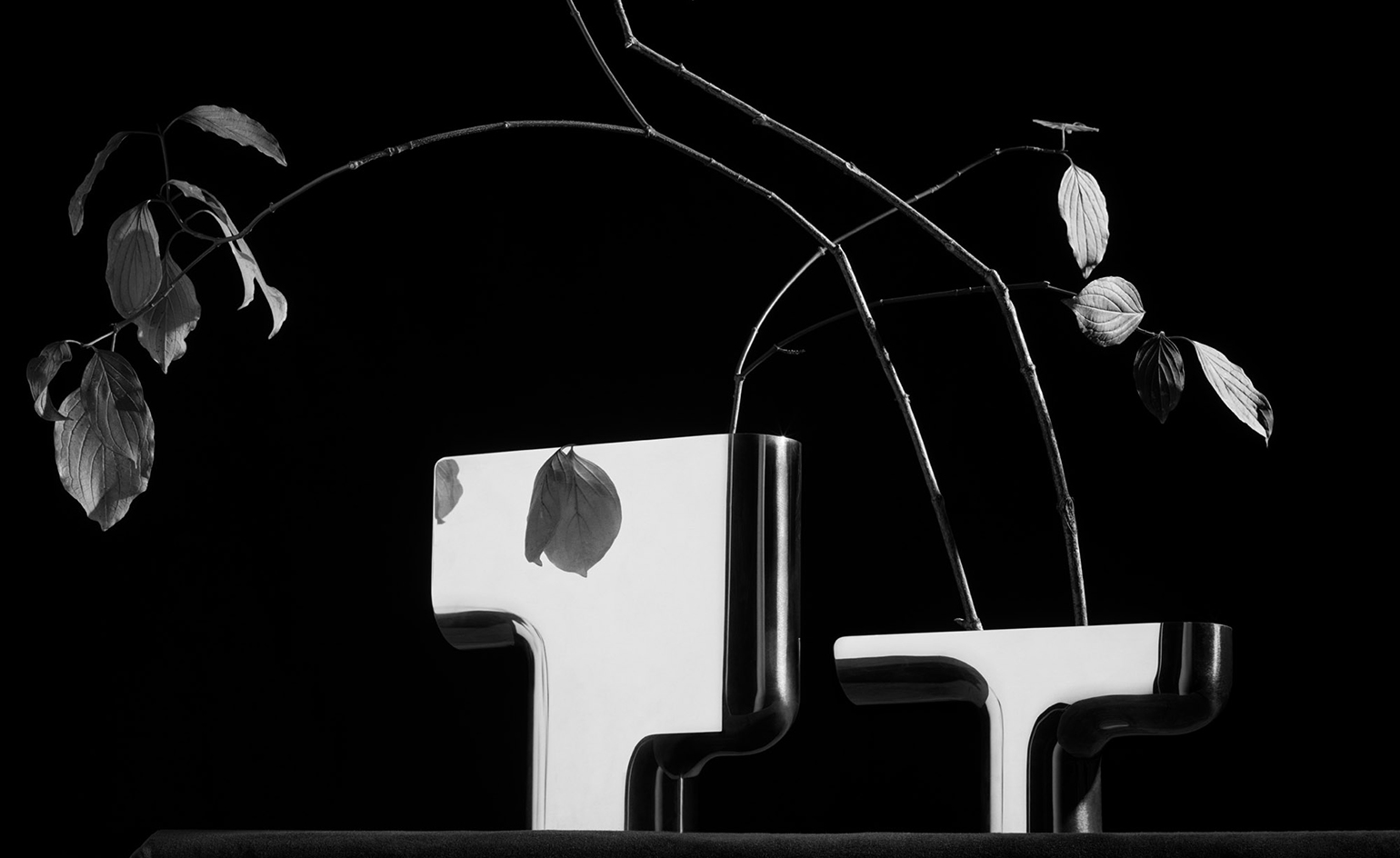 Nendo and Georg Jensen create silver vases inspired by nature
Nendo and Georg Jensen create silver vases inspired by natureJapanese design studio Nendo and Danish silversmith Georg Jensen create a set of three silver vases that combine organic forms and minimalist aesthetics
By Mary Cleary
-
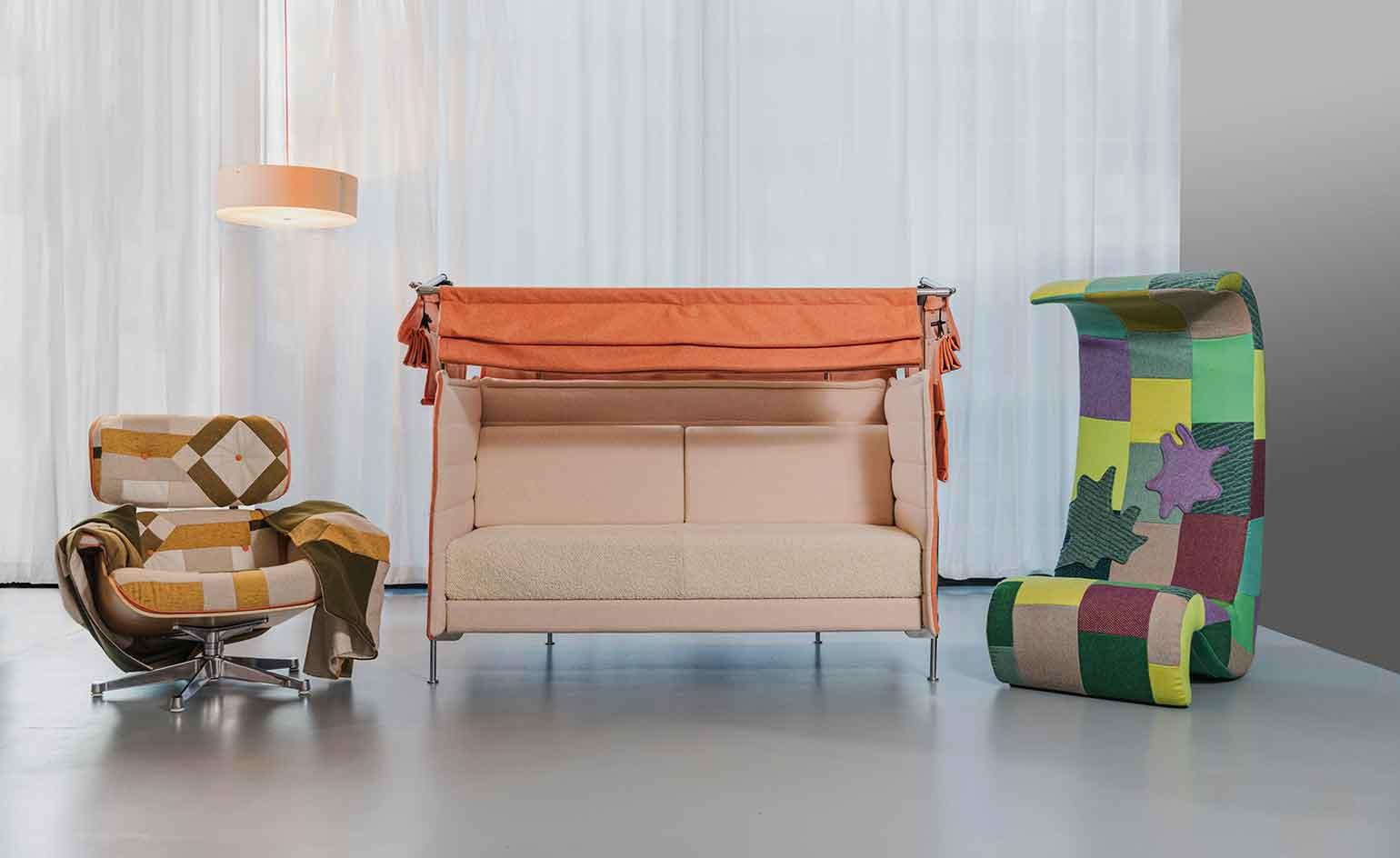 Glasgow School of Art students give new life to CitizenM lobby furniture
Glasgow School of Art students give new life to CitizenM lobby furnitureCoinciding with COP26, CitizenM partners with The Glasgow School of Art to showcase iconic Vitra furniture pieces repurposed by interior design students in collaboration with Bute Fabrics
By Rosa Bertoli